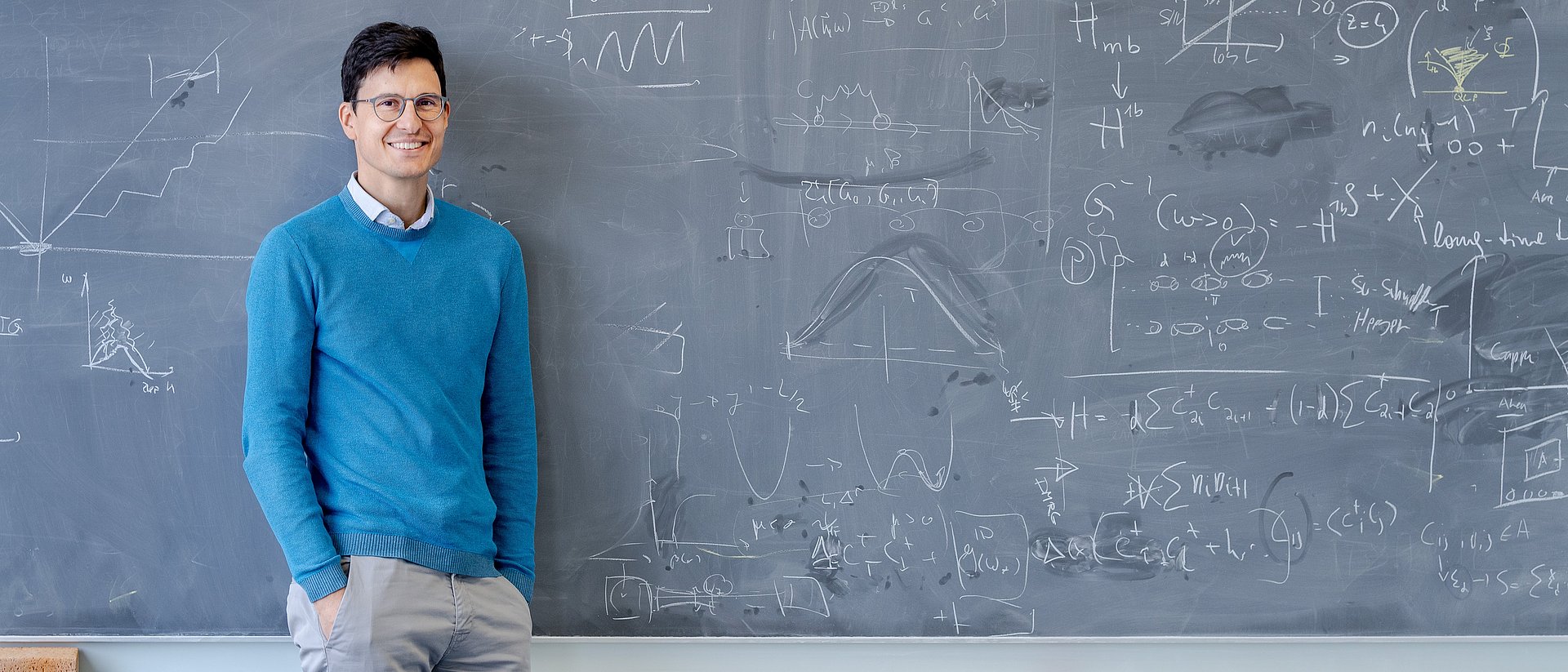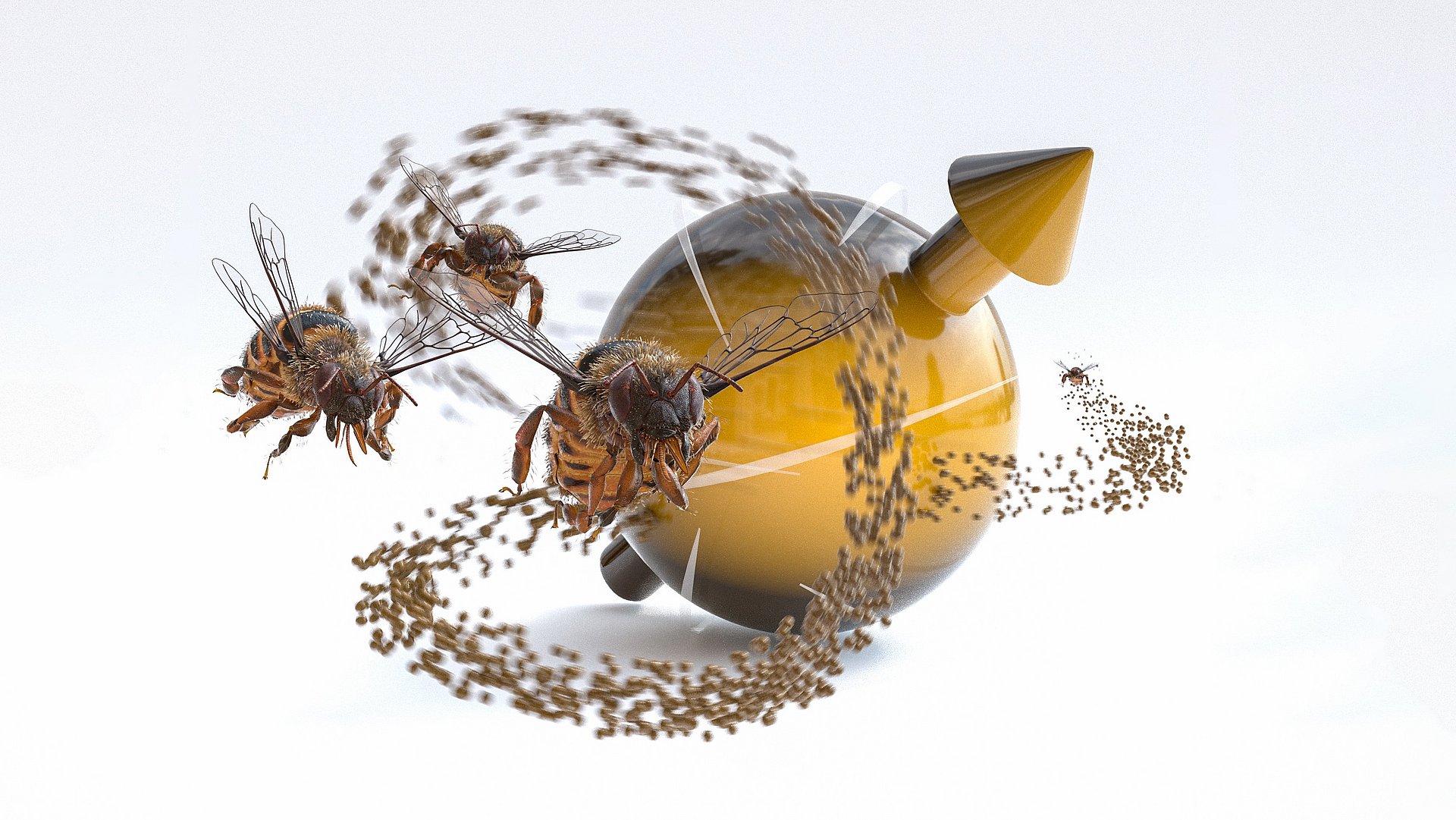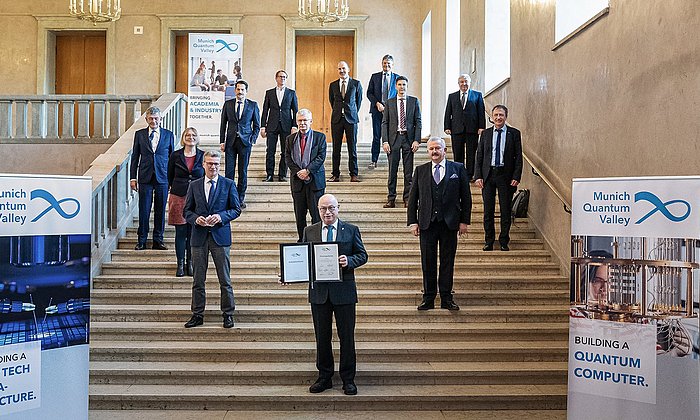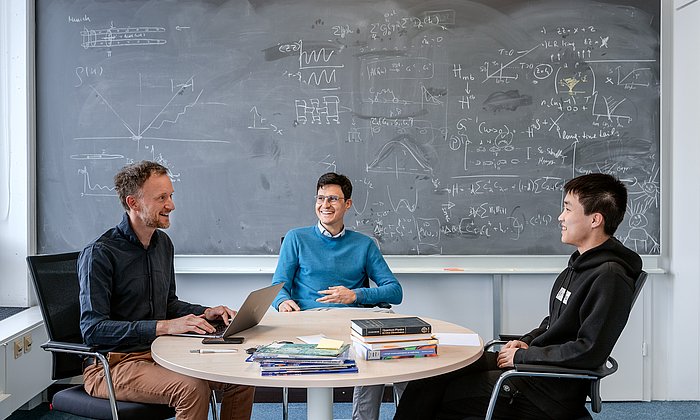Quantum simulator provides insights into the dynamics of complex quantum systems
When quantum particles fly like bees

At first glance, a system consisting of 51 ions may appear simple. But even if these charged atoms can only assume two different states, there will be more than two quadrillion (1015) different configurations which the system can realize.
The behavior of such a system can therefore hardly be calculated with conventional computers. Especially since once an excitation has been introduced into the system, it can propagate in leaps and bounds. It follows a statistic known as Lévy flight.
A characteristic of the movement of such a quantum particle is that, in addition to the smaller jumps, also significantly larger jumps occur. This phenomenon can also be observed in the flight of bees and in unusual fierce movements in the stock market.
Simulating quantum dynamics: A classically hard problem
While simulating the dynamics of a complex quantum system is a very hard problem even for today’s super computers, the task is a piece of cake for quantum simulators. But how are you supposed to check the results of a quantum simulator when you cannot recalculate them?
Theoretical predictions suggested that it might be possible to represent at least the long-term behavior of such systems with equations as those developed by the Bernoulli brothers in the 18th century to describe the behavior of fluids.
To test this hypothesis, the research team used a quantum system that simulates the dynamics of quantum magnets. With this they were able to show that after an initial regime in which quantum-mechanical effects dominate, the system can be described by equations known from fluid dynamics.
Furthermore, they showed that the very same Lévy flight statistics which describes the search strategies of bees also describes the fluid-dynamics in this quantum system.
Trapped ions as a platform for controlled quantum simulations
The quantum simulator was built at the Institute for Quantum Optics and Quantum Information (IQOQI) of the Austrian Academy of Sciences at the University of Innsbruck. "Our system effectively simulates a quantum magnet by representing the north and south poles of an elementary magnet by two energy levels of the ions," says IQOQI Innsbruck scientist Manoj Joshi.
"Our biggest technical advance was that we succeeded in controlling each one of the 51 ions individually," observes Manoj Joshi. "As a result, we were able to investigate the dynamics of different initial states, which was necessary to demonstrate the emergence of the fluid dynamics."
"While the number of qubits and the stability of the quantum states is currently still very limited, there are problems for which we can already now use the enormous computing power of quantum simulators," says Michael Knap, Professor for Collective Quantum Dynamics at the Technical University of Munich.
"Near-term quantum simulators and quantum computers will be ideal platforms to explore the dynamics of complex quantum systems," explains Michael Knap. "Now we know that after a certain point in time these systems follow the laws of classical fluid dynamics. Any strong deviation from that is an indication that the simulator is not working properly."
Observing emergent hydrodynamics in a long-range quantum magnet
M. K. Joshi, F. Kranzl, A. Schuckert, I. Lovas, C. Maier, R. Blatt, M. Knap, C. F. Roos
Science, 13.05.2022 – DOI: 10.1126/science.abk2400
The research activities were funded by the European Community as part of the Horizon 2020 research and innovation program and the European Research Council (ERC), by the German Research Foundation (DFG) as part of the Excellence Cluster Munich Center for Quantum Science and Technology (MCQST), by the Munich Quantum Valley (MQV), supported by the Bavarian state government with funds from the Hightech Agenda Bayern Plus, and by the Technical University of Munich through the Institute for Advanced Study, which is supported by funding from the German Excellence Initiative and the European Union. Additional support was provided by the Max Planck Society (MPG) within the International Max Planck Research School for Quantum Science and Technology (IMPRS-QST), by the Austrian Science Fund (FWF) and the Institut für Quanteninformation GmbH.
The co-authors Prof. Michael Knap (TUM) and Prof. Rainer Blatt (University of Innsbruck) are actively engaging in the "Munich Quantum Valley", an initiative with the objective of establishing a Center for Quantum Computing and Quantum Technology (ZQQ) over the next five years. Three quantum computers are to be built based on superconducting qubits as well as qubits from ions and atoms. Members of the Munich Quantum Valley e.V. association include the Bavarian Academy of Sciences and Humanities (BAdW), Fraunhofer Gesellschaft, Friedrich-Alexander-Universität Erlangen-Nürnberg (FAU), German Aerospace Center (DLR), Ludwig-Maximilians-Universität Munich (LMU), Max Planck Society (MPG) and Technical University of Munich (TUM).
Technical University of Munich
Corporate Communications Center
- Andreas Battenberg
- andreas.battenberg@m-q-v.de
- presse@tum.de
- Teamwebsite
Contacts to this article:
Prof. Dr. Michael Knap
Professur für Kollektive Quantendynamik
Technische Universität München
James-Franck-Str. 1, 85748 Garching
Tel.: +49 89 289 53777 – E-Mail: michael.knap@ph.tum.de
Prof. Dr. Christian Roos
Institut für Experimentalphysik
Universität Innsbruck
Technikerstraße 25, 6020 Innsbruck
Tel.: +43 512 507 4728 – E-Mail: christian.roos@uibk.ac.at



